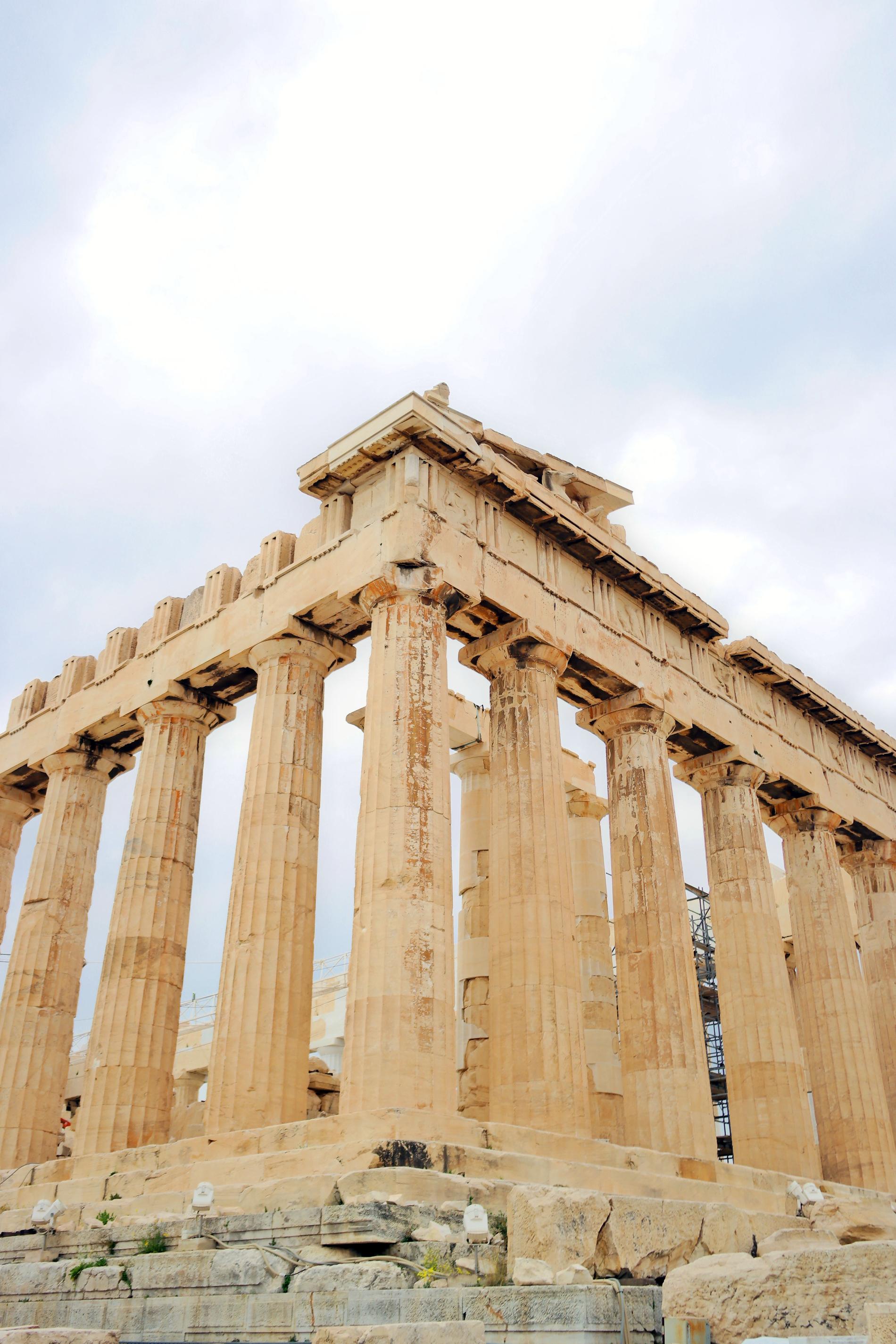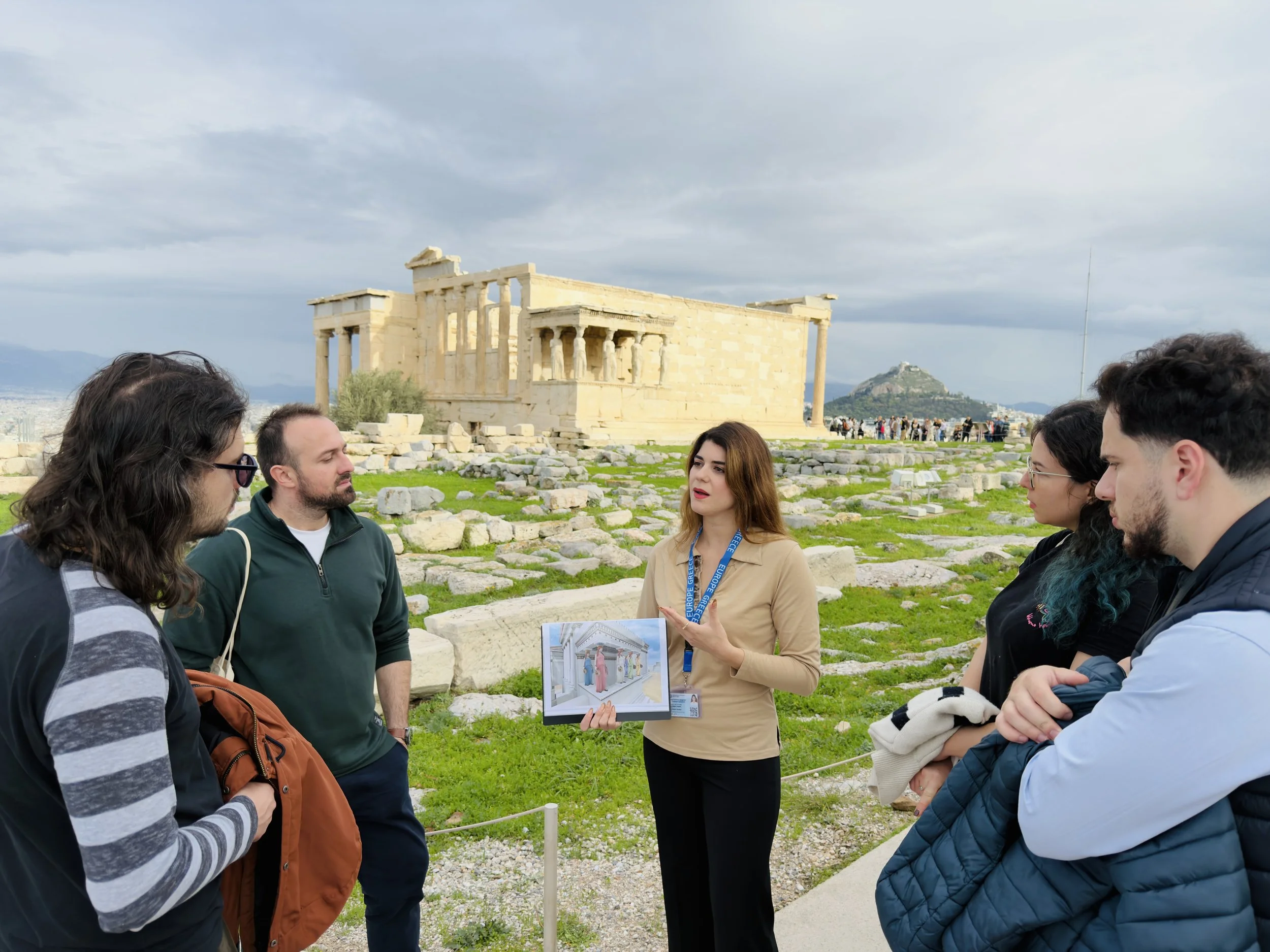Top Historical Sites in Athens for Archaeology Enthusiasts
It goes without saying that if you are into archaeology, Athens is the place to be. Whether you are interested in prehistoric, classical or byzantine archaeology, you will definitely find something to your liking. Dare to get lost in the Greek capital and discover archaeological surprises in almost every corner. Here are listed a few of my personal favorites in Athens.
1. The Acropolis
Parthenon, the magnificent Doric temple dedicated to the goddess Athena. Source: Truevoyagers
No doubt, the must-see archaeological site of Athens is no other than the Acropolis, the landmark of Greece itself. The Acropolis Hill was first inhabited in the Neolithic Period and was used throughout antiquity, while reaching its peak in the 5th c. BC during Pericles’ Golden Era. The most famous structure is the Parthenon, a magnificent Doric temple dedicated to the goddess Athena. It was designed by the architects Iktinos and Kallikrates and remains of extreme architectural value until today, while part of its beautiful sculptures can be found at the Acropolis Museum.
Porch of the Caryatids in Erechtheion. Source: Truevoyagers
Along with Parthenon, do not miss the Erechtheion, the temple of Nike and the monumental Propylaia.
Visiting Hours: 08:00-17:00 Last admission: 16:30. For more information, ticket prices and special admissions click here.
2. Theatre of Dionysus and the Odeon of Herodes Atticus
The entrance of Odeon of Herodes Atticus. Source: Truevoyagers
These two theatres are often confused; however, they were built in different periods.
Just at the foot of the Acropolis, one would find the Theatre of Dionysus, operating since 6th century BC and hosting the dramatic performances of the City Dionysia, festival dedicated to Dionysus.
Theatre of Dionysus as seen from Acropolis Hill. Source: Truevoyagers
On the southwest slope of the Acropolis the Odeon of Herodes Atticus is located, constructed in 161 AD, during the Roman rule. As the Odeon is open only during events, you will not be able to go inside. However, I strongly suggest attending one of its performances, which vary from ancient theatre, opera to dance. The lighted Parthenon above adds to the theatre’s beauty.
Events and news concerning the Odeon of Herodes Atticus can be found here.
3. Around the Acropolis Hill
Amazing Acropolis view from Philopappou Hill. Source: Truevoyagers
Surrounding the Acropolis hill, there are plenty of archaeological sites which are worth visiting.
Strolling down the pedestrian street of Dionisiou Aeropagitou towards Thisseio, you come across many places of interest, like the Philopappou Hill/Muses Hill. On the top of the hill you will find the 114-116 AD monument in honor of Gaius Julius Antiochus Epiphanes Philopappos, a Greek Prince of the Kingdom of Commagene. The view from the top is idyllic and you can enjoy it while listening to stories of lovers and gods in the Boudoir of the Gods mythological tour.
Next to Philopappou Hill you will find the Pnyx, which hosted the Athenian democratic ekklesia (assembly) from 507 BC. This site is of major importance, as it was the heart of the Athenian Democracy.
On your right as you walk down Dionisiou Aeropagitou stands another significant hill, the Areopagus. In classical times this area functioned as a court, while it is also connected with Apostle Paulos, who preached the word of God for the first time to Athenians. The view from the top is stunning, as you can see the whole city center, while the Acropolis, especially at night, looks incredible. You can enjoy the view while on a Running Tour under the guidance of a professional trainer.
Philopappou Hill, the Pnyx and Areopagus rock are open to the public 24 hours a day.
4. Ancient and Roman Agora
The Roman Agora of Athens. Source: Truevoyagers
The Ancient Agora of Classical Athens, was used as a commercial and general residential gathering area. In this archaeological site you will discover many temples, altars and other important religious and political buildings, the most known being the Temple of Hephaestus (Thisseio), visible from outside. The museum of the Ancient Agora, is located inside the Stoa of Attalos, with exhibits mainly connected to the Athenian democracy.
To the east of the Ancient Agora stands the Roman Agora, built between 19-11 BC from donations of Julius Caesar and Agustus. Friendly tip: enjoy coffee or wine, in one of the cafes at Klepsidras and Lisiou streets, with a beautiful view to the Tower of the Winds in the Roman Agora.
Ancient Agora is open daily from 08.00 to 15.00. For ticket info, click here.
Roman Agora is open Monday-Friday: 08:00-15:00 and Saturday-Sunday: 08:00-17:00. For ticket info, check here.
Capture the essence of the Ancient and Roman Agora
See the most photogenic spots of Athens under the guidance of a local expert!
5. Ancient Cemetery of Kerameikos
The ancient cemetery of Kerameikos. Source: Truevoyagers
The area southwest of the Acropolis is called Kerameikos and took its name due to the ceramic production (kerameis/κεραμείς) that took place here as the Eridanos River carried a lot of clay mud. The cemetery of Kerameikos has been in use since the Early Bronze Age until the palaiochristian times (6th c. AD). The excavations have uncovered an abundance of archaeological finds, like the famous oenochoe of Dipylon (with one of the oldest inscriptions in the Greek alphabet).
On the pedestrian street of Ermou, leading to Gkazi you will also find the Greek Archaeological Society, often hosting interesting and informative events.
Visiting Hours: Daily from 8.00 to 15.00. For more info and ticket prices, click here.
6. Aristotle’s Lyceum
Aristotle is one of the most famous philosophers, the so-called "Father of Western Philosophy". Source: NY Post
The archaeological site of Aristotle’s Lyceum (Peripatetic School) is less known, as it has been open for public only since 2014. However, it is of extreme historical importance, being one of the three oldest gymnasia of ancient Athens. The Lyceum located between the Avenues of Vas. Sofias and Vas. Konstantinou, was founded in 335 BC. The name derives from the nearby temple of Lyceus Apollo (wolf-killer). Use your visit to the Aristotle’s Lyceum as an opportunity to enjoy a lovely walk between typical Greek plants (oregano, olive trees, thyme), while grasping the magnitude of Aristotelianism, the study of knowledge itself, Greek philosophy at its best.
The archaeological site of Lykeion is open Monday to Friday from 08.00 to 15.00.
7. Panathenaic Stadium
Panathenaic Stadium in Athens, the only stadium in the world entirely made from marble. Source: Truevoyagers
The Panathenaic Stadium or Kallimarmaro (fine marble), is the world’s only stadium made entirely from marble and has long history in Athenian life. The stadium was first built in 338 BC to host the Panathenaic Games and was reconstructed in marble by Herodes Atticus by 144 BC. In recent history, Kallimarmaro hosted the first modern Olympic Games in 1896 and it was also used in the Olympics of 2004 for some contests. In 1968 A.E.K defeated here Slavia Prague during a FIBA basketball game, match that holds ever since the Guinness record for biggest attendance in open air stadium (counting around 80.000 spectators).
Hours of operation: March - October: 08:00 – 19:00 last ticket sold at 19:00, November - February: 08:00 – 17:00 last ticket sold at 17:00. For more information visit the Stadium’s official website.
8. Churches and Monasteries
Kapnikarea church at Ermou Street. Source: Truevoyagers
Another traditional church located in Amarousion, Athens, Greece. Source: Truevoyagers
If you are into Byzantine period, Athens will not leave you disappointed, as you can find a few gems of this period, like the Church of Panagia Kapnikarea in Ermou Street near Syntagma, one of the oldest Christian churches in Athens (around 1050), and the 12th century little church of Panagia Gorgoepikoos, next to the Mitropolis Cathedral. The 10th/11th century Kaisariani Monastery, built on an ancient cult area dedicated to Aphrodite, is famous for its frescoes, which influenced later Christian iconography. Last but not least, visit the Daphni Monastery, a UNESCO site, known for its architecture but mainly the beautiful mosaics, like that of Christ Pantocrator on the dome.
Still have not tasted enough archaeology? Why not get your hands dirty by joining the Make Your Own Souvenir Workshop? This 3-hour workshop includes a lecture in ancient Greek art, while you can use your creativity to create figurines and pottery using clay 😊
Did you like our post? Pin it for later!
Top Historical Sites in Athens, Greece for archaeology enthusiasts by Truevoyagers
Are you a history buff? Which historical site of the above surprised you the most? Let us know by commenting below!
Words: Saima Androutsopoulou
Photos: Truevoyagers and Didem Alparslan























